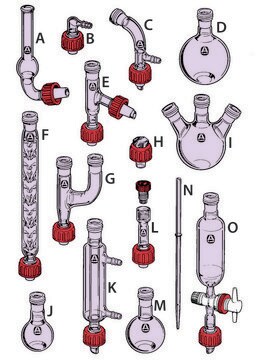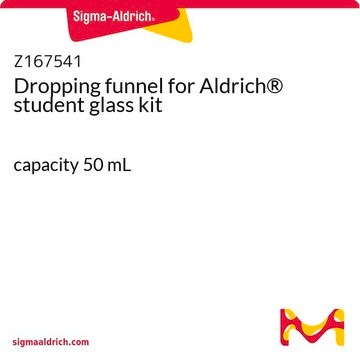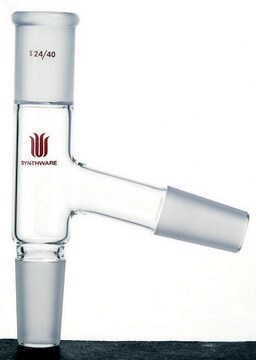Z174874
Adapter for ACE Micro/Mini-Lab® kit
Vacuum-takeoff with hose barb, joint: ST/NS 14/10
Sign Into View Organizational & Contract Pricing
All Photos(1)
About This Item
UNSPSC Code:
41121815
NACRES:
NB.43
Recommended Products
Joint
joint: ST/NS14/10
manufacturer/tradename
Ace Glass 956410
Looking for similar products? Visit Product Comparison Guide
Related Categories
Legal Information
Micro/Mini-Lab is a registered trademark of Ace Glass, Inc.
Choose from one of the most recent versions:
Certificates of Analysis (COA)
Lot/Batch Number
It looks like we've run into a problem, but you can still download Certificates of Analysis from our Documents section.
If you need assistance, please contact Customer Support.
Already Own This Product?
Find documentation for the products that you have recently purchased in the Document Library.
Giovanna Trinchese et al.
The Journal of nutritional biochemistry, 26(11), 1136-1146 (2015-06-30)
Different nutritional components are able, by modulating mitochondrial function and gut microbiota composition, to influence body composition, metabolic homeostasis and inflammatory state. In this study, we aimed to evaluate the effects produced by the supplementation of different milks on energy
Y Y Xiao et al.
Epidemiology and infection, 143(9), 1833-1838 (2014-11-02)
No published studies have discussed details of the prognosis and survival of patients with severe avian influenza A(H7N9) infection. In this study we analysed 128 laboratory-confirmed cases of severe H7N9 infection in Zhejiang province, the most affected region during the
Mark Zeller et al.
Molecular biology and evolution, 32(8), 2060-2071 (2015-04-11)
The majority of human group A rotaviruses possess the P[8] VP4 genotype. Recently, a genetically distinct subtype of the P[8] genotype, also known as OP354-like P[8] or lineage P[8]-4, emerged in several countries. However, it is unclear for how long
James Neil Fisher et al.
Oncotarget, 6(15), 13176-13200 (2015-05-12)
SKBR3-cells, characterized by ERBB2/RARA co-amplification, represent a subgroup of HER2+ breast-cancers sensitive to all-trans retinoic acid (ATRA) and Lapatinib. In this model, the two agents alone or in combination modulate the expression of 174 microRNAs (miRs). These miRs and predicted
Monique Silvy et al.
Transfusion, 55(6 Pt 2), 1407-1410 (2014-11-22)
The rare amorph Rhnull phenotype is caused by silent alleles at the RH locus and usually arises in consanguineous families. To date, only five molecular backgrounds have been identified in five unrelated families. Subjects with Rhnull red blood cells (RBCs)
Our team of scientists has experience in all areas of research including Life Science, Material Science, Chemical Synthesis, Chromatography, Analytical and many others.
Contact Technical Service







